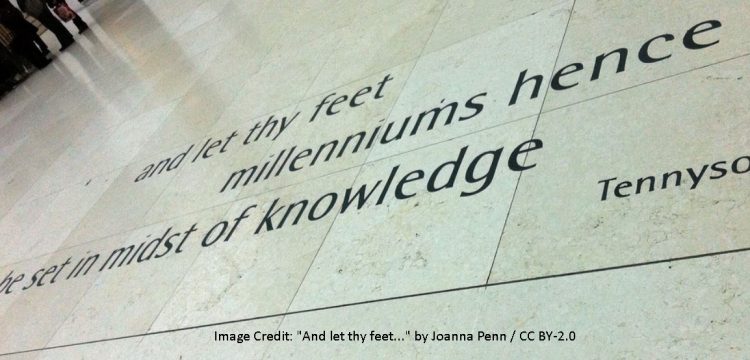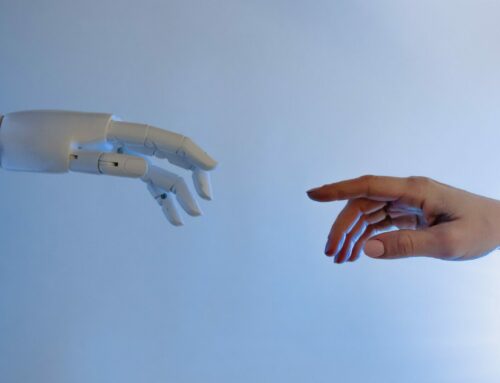Higher education as a multi-purpose enterprise
Patrick Blessinger
St. John’s University (NYC) and International HETL Association
Globalisation is a socio-politico-economic phenomenon that, some would argue, has eclipsed post-modernism and post-structuralism as a framework for explaining the development of the modern world over the past several decades.
Whereas post-structuralism stresses the instability and complexity of human relations within a historical interpretive framework, the closely related framework of post-modernism stresses the uncertainty and subjectivity associated with interpreting social reality.
Globalisation, with its emphasis on increased integration, interaction and connectivity, also provides a plausible framework for explaining the development of global higher education.
Globalisation’s impact on the world
A nation is a socio-cultural construct and a state is a geo-political construct. Thus, a nation-state is formed when these two constructs overlap. As such, a nation-state can be viewed as a country consisting of a largely homogenous culture under a single government, that is, a state with one common nationality, as opposed to a multinational (multicultural) state.
However, globalisation and the resulting development of supranational states has led to certain nation-states being subsumed into larger supranational geo-political entities – for example, the European Union, the United States, the Commonwealth.
In addition, an increasingly hyper-connected globalised world with its emphasis on universal human rights, representative democracy and open markets makes the reality of the nation-state even more tenuous as globalisation continues to impact the development of the world.
As a result, the globalisation-internationalisation virtuous cycle has led to an apparent increasing homogenisation of life (use of internet commerce and a common international language) at the global level while keeping life at the local level still relatively heterogeneous (use of traditional cultural practices and native languages).
In short, the world continues to shrink as a result of increasingly integrated globalised trade, transportation and communication systems which is reflected in the development of global supranational entities such as the United Nations, the World Bank and the World Trade Organization.
Integrating educational theory and philosophy
Given the wide-ranging impacts that global forces are having on higher education institutions, relevant theories are needed to help explain how and why these developments are occurring.
A theory, as opposed to a philosophy (a justified belief system), is a supposition or principle that explains how and why a particular phenomenon works. As discussed in the book, Meaning-Centred Education, which I co-edited with Olga Kovbasyuk, philosophies rely on logic and reason to substantiate the veracity of their claims and theories rely on empirical data and formal research methods.
These two schools of thought also reflect the two major epistemological paradigms (relative to the nature of inquiry) that have emerged since Socrates (rationalists) and Aristotle (empiricists). Very broadly speaking, these two paradigms are reflected in higher education today via the English liberal arts tradition and the German research tradition, respectively.
The chief aim of a theory is to explain as much as possible about a particular phenomenon while making as few assumptions as possible. The predictive ability of a theory is the amount of explanation the theory provides divided by the amount of assumptions that underlie the theory. Thus, the explanatory power of theory lies in its predictive ability.
When confronted with two or more theories that attempt to explain the same phenomenon, the one which makes the fewest assumptions is usually preferred, all else being equal.
The power of philosophy, on the other hand, is to provide a broad value system upon which to guide decision-making that is consistent with cultural, ethical and professional values.
Although theory and philosophy are different, they complement each other and both are important to the development of educational policy and practice. For instance, the development of constructivism as an educational philosophy has been greatly influenced by the learning theories of Piaget, Vygotsky and others.
Convergence of theory, policy and practice
In my book, Democratizing Higher Education, a democratic theory of higher education emerged from a comparative analysis of national systems of higher education around the world. The analysis focused on the most significant socio-political forces underlying the emerging global trends impacting higher education.
The aim was to better understand the common trends and themes that cut across national systems of higher education as well as how and why global higher education has developed the way it has over the past several decades.
Gaining a better understanding of these trends and themes allows educators to make clearer sense of the shifting landscape of higher education, which in turn allows educators to make more informed policy decisions, which in turn allows educators to improve professional practices.
It is often at this intersection of theory, policy and practice that meaningful educational outcomes can be achieved.
The findings of these two books have yielded a democratic theory of higher education that posits that in a modern democratic society lifelong learning has become a primary means by which people are more capable of exercising political self-determination, improved socio-economic opportunities and personal empowerment.
Global citizenship and intercultural competencies
Notwithstanding the fact that certain problems in higher education still exist (for example, rapidly increasing tuition costs and massive student debt in some countries) there are many positive trends as well – the universalisation of higher education, increased democratisation of knowledge, increased flow of higher education across national borders – that have created a rapidly expanding global space for higher education.
It is within this contemporary landscape that higher education institutions are reordering themselves to adapt to the forces of globalisation.
Internationalisation – the strategic adaptive response to globalisation – is a primary way by which these institutions are adapting. For instance, internationalising the curricula and learning activities is a common institutional strategy to increase enrolment of international students and faculty. Also, developing more international partnerships with other institutions allows universities to expand their reach in ways they could not otherwise do.
Within this global context therefore, it is no surprise that more universities are emphasising global citizenship and intercultural competencies for both students and faculty, as well as a greater emphasis on developing an inclusive leadership mindset for educational administrators and leaders.
It is also no surprise that higher education has become an increasingly multi-purpose enterprise focused on the development of personal agency and lifelong learning which help to strengthen democracy and extend the democratic social contract to all.
Patrick Blessinger is the founder and executive director of the International Higher Education Teaching and Learning Association and an adjunct associate professor of education at St John’s University in New York City, USA. He is co-editor with John P Anchan of Democratizing Higher Education: International comparative perspectives.
Note: this article also appears in the University World News blog at http://www.universityworldnews.com/article.php?story=20160405161219332
Suggested Citation:
Blessinger, P. (2016). Higher education as a multi-purpose enterprise. Higher Education Tomorrow, Volume 3, Article 4, https://www.patrickblessinger.com/higher-education-as-a-multi-purpose-enterprise
Or
Blessinger, P. (2016). Higher education as a multi-purpose enterprise. University World News, http://www.universityworldnews.com/article.php?story=20160405161219332
Copyright © [2016] Patrick Blessinger
Disclaimer
Opinions expressed in this article are those of the author, and as such do not necessarily represent the position(s) of other professionals or any institution.




